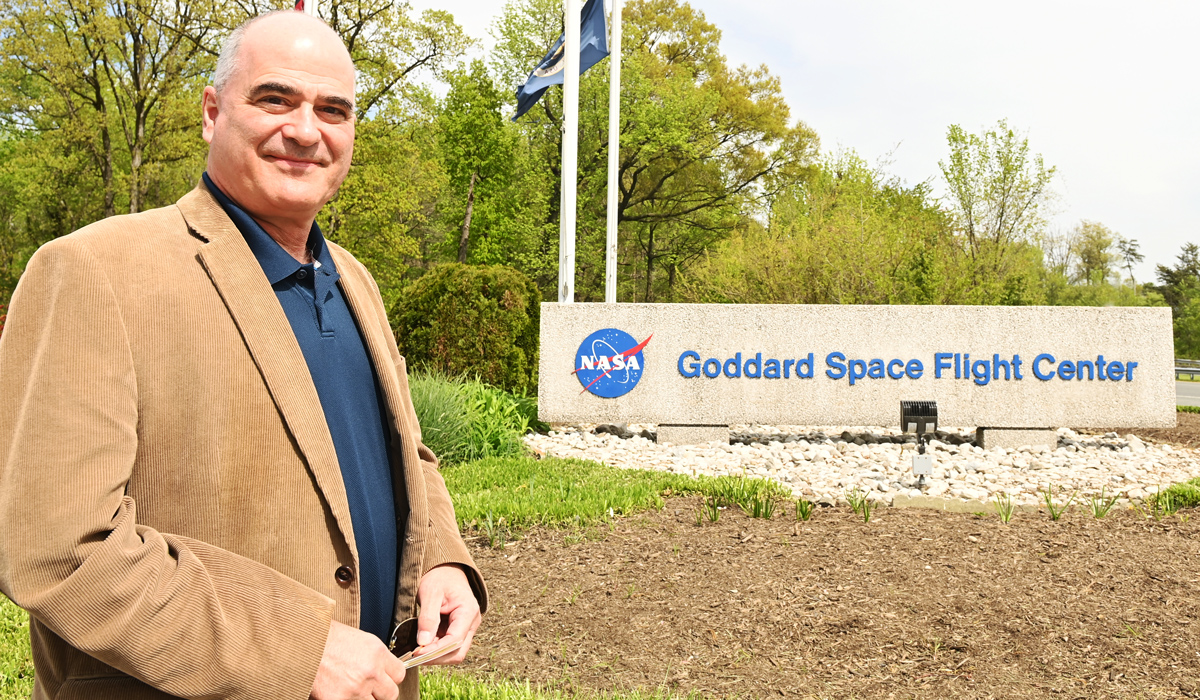

Tommy Wiklind, research professor of physics and associate director of CRESST II.
NASA has announced an extension to the Center for Research and Exploration in Space Science and Technology II (CRESST II) program through March 2027.
The cooperative agreement, which started in 2017, created a collaboration between NASA Goddard Space Flight Center (GSFC) and four local universities — led by the University of Maryland, College Park and including the University of Maryland, Baltimore County; The Catholic University of America; Howard University; and Southeastern Universities Research Association.
The extension is for $178 million through March 2027. Catholic University will receive $27 million of this funding. The initial agreement granted a total of $87.5 million, with $8 million going to CatholicU. According to Ralph Albano, vice provost for research, this agreement is one of the biggest single research awards the University has ever received.
“The overall goal of CRESST II is to support and enhance research and technology in the space sciences in support of NASA’s strategic science mission objectives,” the project’s website states. “CRESST II also seeks to encourage the engagement of a diverse population of students and Ph.D. scientists in NASA’s space science programs.”
Catholic University scientists who are involved with CRESST II are a part of the Institute for Astrophysics and Computational Sciences (IACS), housed within the Department of Physics.
“Apart from hiring scientists and researchers to work at NASA Goddard, we have several students doing their Ph.D. research projects at Goddard Space Flight Center together with NASA scientists,” says Tommy Wiklind, research professor of physics and associate director of CRESST II. Since 2017, four CatholicU graduate students have worked at Goddard as part of the CRESST II project, and two have defended their Ph.D. and moved on to postdoctoral positions. One more is currently defending their dissertation. CRESST II also operates a summer program that brings in students for 10-week research internships.
Through its partner institutions, CRESST II employs approximately 160 scientists who work on a wide range of space science projects in the GSFC Divisions of Astrophysics Science and Solar System Exploration. Currently, 30 of those scientists are affiliated with Catholic University. CRESST II scientists work directly with NASA scientists to support operating missions, conduct scientific research, develop instruments, and design future missions.
Several CRESST II postdoctoral students are currently working on preparations for the James Webb Space Telescope (which is expected to launch this fall), and two CatholicU graduate students (now in postdoctoral positions) have been working on research related to that telescope’s successor, the Nancy Roman Telescope. They are working on microlensing and how this technique can be used to search for exoplanets (planets outside our solar system).
CRESST II researchers are also working on the Lunar Reconnaissance Orbiter and on NICER, a gamma-ray detector that sits on the International Space Station. One CRESST II scientist is working with data from the Mars rover Curiosity, and two are studying moon rocks brought back from the Apollo missions that have been sealed away for 50 years waiting for new analysis technology.
Steve Kraemer, director of IACS, said CRESST II has enabled the University to hire 25 research staff since the initial agreement was established in 2017. It also has provided students with research and career opportunities in fields including astrochemistry, solar system research, and the study of other galaxies as well as astronomical instrumentation.
“This extension demonstrates the continued success of CatholicU’s work with NASA and our CRESST II partners,” he says.
"This is such an exciting opportunity for our scientists and students to explore and discover new knowledge,” says University Provost Aaron Dominguez. “I am very thankful to NASA and our collaborating institutions for their trust and support.”